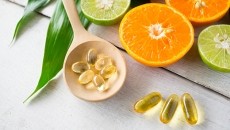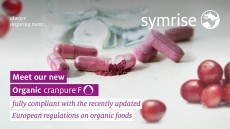New review may demand flavonoid rethink
when eaten but may still have significant benefits by other
mechanisms, says a new review of the science.
"What we now know is that flavonoids are highly metabolized, which alters their chemical structure and diminishes their ability to function as an antioxidant," said Balz Frei, professor and director of the Linus Pauling Institute at Oregon State University.
"The body sees them as foreign compounds and modifies them for rapid excretion in the urine and bile."
"But this process of gearing up to get rid of unwanted compounds is inducing so-called Phase II enzymes that also help eliminate mutagens and carcinogens, and therefore may be of value in cancer prevention," he said.
"Flavonoids could also induce mechanisms that help kill cancer cells and inhibit tumour invasion."
Flavonoids, polyphenolic compounds in fruit, vegetables, coffee, tea and chocolate, have been receiving interest with a mounting body of science, including epidemiological and laboratory-based, continuing to report the cancer-fighting potential of a number of different flavonoids, such as isoflavones, anthocyanidins and flavonols.
According to Business Insights, the market potential for flavonoids in the dietetic and nutritional supplement market is in excess of €670m ($862m) for 2007, with annual increases of 12 per cent.
However, the view that the compounds are potent antioxidants has been challenged by the review, published in the journal Free Radical Biology and Medicine , which has concluded that, despite excellent antioxidant activity in a test-tube, the compounds do not exert a significant antioxidant effect in the body.
Silvina Lotito and Frei reviewed the data from in vitro , ex vivo and in vivo studies and concluded: "Based on the data reviewed in this article, it seems highly unlikely that flavonoids can make a significant contribution to antioxidant protection of plasma and other extracellular fluids in vivo."
While in laboratory tests of their ability to scavenge free radicals, results have shown that flavonoids have between three and fives times more antioxidant capacity than vitamins C or E. "But with flavonoids in particular, what goes on in a test tube is not what's happening in the human body," said Frei.
Indeed, research has shown that only about five per cent of ingested flavonoids are actually absorbed by the body, and most of what does get absorbed into the blood stream is rapidly metabolised and excreted.
The large increase in total antioxidant capacity of blood observed after the consumption of flavonoid-rich foods is not caused by the flavonoids themselves, said Frei, but most likely is the result of increased uric acid levels by fructose and similar compounds also found in the flavonoid-rich foods.
"This does not preclude the possibility that flavonoids may accumulate in tissues where they might exert local antioxidant effects or that very low concentrations of flavonoids may modulate cell signalling, gene regulation, antiogenesis, and other biological processes by non-antioxidant mechanisms, which may explain the purported health benefits of flavonoids," wrote the reviewers.
Additionally, the reviewers noted that there is evidence that the compounds increase the activation of existing nitric oxide synthase, which has positive effects on blood vessels, preventing inflammation, and lowering blood pressure.
The overall conclusion is to continue to consumer between five and nine portions of fruit and vegetables every day.
The "five-a-day" message is well known, but applying this does not seem to be filtering down into everyday life.
Recent studies have indicated that consumers in both Europe and the US are failing to meet recommendations from the WHO to eat 400 grams of fruit and vegetables a day.
Source: Free Radical Biology and Medicine Volume 41, Pages 1727-1746 "Consumption of flavonoid-rich foods and increased plasma antioxidant capacity in humans: Cause, consequence, or epiphenomenon?" Authors: S.B. Lotito, B. Frei











